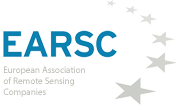Last Friday I was in Rome at the invitation of the Italian Space Agency ASI. Along with colleagues from the other European Associations Eurospace and SME4Space, I participated to a workshop hosted by ASI to exchange views on the next EU MFF (Multi-Annual Financial Framework). Our equivalent Associations in Italy (ASAS, AIPAS and AIAD) were also present.
It is the first time that I have known such a meeting which seeks to build links between the national and European associations; quite possibly because there are not many national associations in our sector. In the aeronautics sector, ASD (of which Eurospace is part) is run by the national associations (together with some of the larger companies) so alignment is much more natural. For EARSC, we generally rely on companies to make the bridge between national and European policy actions.
The discussion centred on two main topics; Copernicus and the space technology JTI being studied and possibly set up by Eurospace. Our interest is of course on the former of these and I basically presented our views from the position paper published earlier this year. These are focused around sustainable access to data, organising and stimulating demand and creating an environment where EO service companies can flourish. All of these lines require some clarification on the roles of the public and private actors and improving the governance so that the industry views can be heard.
In order to achieve sustainable access to data, we address the question of private participation in Copernicus and the possibility of anchor tenancy schemes. This was also the subject of the meeting organised by DG GROW – also held last week. We have recommended different formula should be tried depending on the market for the data type leading to different PPP arrangements. There were some concerns expressed that most PPP schemes shut out the SME’s and a recommendation that a number of schemes of various sizes should be considered to try to overcome this problem.
Further, it is easier to understand a PPP where the private sector can invest in infrastructure as is the case for a satellite system. It is less obvious when we move downstream where the asset is more about IPR. So the notion of multiple PPP’s and of different sizes could be a way to help structure the industry without stifling the innovation which is apparent. As one speaker said the key question will be who is taking the decisions on the actions developed under the PPP.
We have all seen over the last 2 years how the EO services sector has been changing. New commercial satellite systems, cloud storage and processing, big data technologies and machine learning or artificial intelligence are all having a huge impact on the business models of EO service providers. Despite these changes, even today 90-95% of the business is for what we call bespoke services ie one product for one customer.
This will certainly change and our survey earlier this year showed that the companies in the market consider that in 5 years, on-line services will make up 25% of their business. This would represent a growth rate of 30-40% which is certainly of interest and shows why new players are coming into the market.
In Europe, the Copernicus programme also continues to have a heavy influence on the market and EARSC is working with the European Commission to enhance the possibilities for companies to benefit from the world’s most significant operational satellite programme. We organise workshops and increasingly trade missions to other countries interested to become closer linked to Copernicus.
Now, as we approach the 3rd decade of the 21st century, the EU starts to prepare its next budget (2021-2027) including what should be the next steps for Copernicus. We prepared a position paper in the summer (download it here) setting out industry views and the EC is organising a consultation meeting with the industry on 12th December in Brussels. This is open to all companies engaged in the EO sector (upstream and downstream) and I encourage all with an interest in how Copernicus enters the next decade to attend. This is an important workshop to listen to the industry and if their views are not expressed then it will be too late to raise concerns later.
The arrangements for the provision of data, the data policy, the set-up of the Copernicus services, the evolution of these services and most importantly the role of industry in all these aspects will help shape the EO industry of the future. It is not too late to register. Contact us if you wish to have further details.
